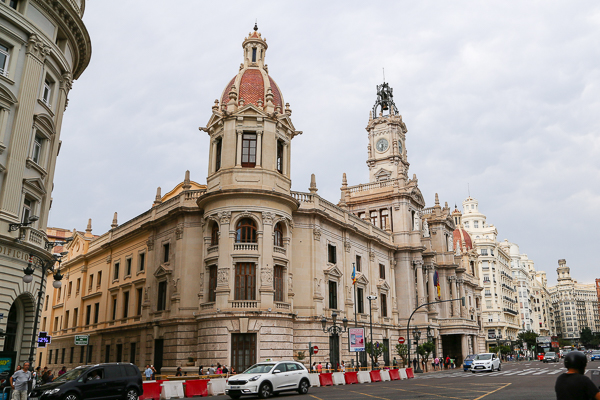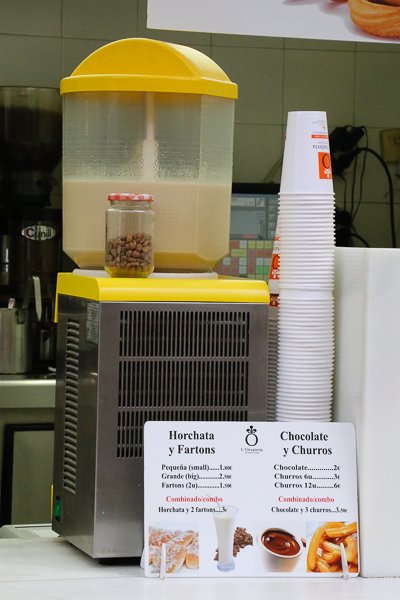
We wanted 2 days in Valencia in ideal, were constrained to 6 hours in planning, and ended up with 3 hours in reality.
But compromises are a part of traveling that we've learned to take in stride. Part of it -- losing 90 minutes to boarding the wrong train -- was my stupid mistake, and the rest -- losing another hour to a bloodied assault on the conductor that involved the dramatic chase and arrest of two fare-evading passengers in front of our train window -- was an uncontrollable freak incident.

With 6 hours we could have started with a leisurely lunch of Paella Valenciana, visited the famous Silk Exchange, admired the baroque interior of Parroquia Sant Nicolau and the 13th century Cathedral while sipping an ice-cold Orxata, and perhaps wrapped up with a taxi ride to see the stunning contemporary architecture at the City of Arts and Sciences.

A gorgeous metropolis with everything from charming historic neighbourhoods to grand 19th century boulevards to sleek futuristic event venues, Valencia probably deserves a week to properly appreciate and savour. But with only 3 hours in town before our high speed train connection to Cuenca, we had to condense our checklist down to three emblematic, unquestionably Valencian experiences.

First and foremost, an authentic Paella Valenciana at the birthplace of paella. Chunks of rabbit, chicken, liver, green and white beans adorned this ginormous pan of rice that turned out impossible for two people to finish. The only complaint was that half of our soccarat, the caramelized crust considered by many to be the best part of the paella, was charred to a black, inedible form.
TABERNA ALKAZAR (Valencia)
Location Map
Bill for Two Persons
| Salpicon de Marisco | 13 Euros |
| Paella Valenciana | 26 Euros |
| Bottle of Water | 3.85 Euros |
| TOTAL | 42.85 Euros (CAD$64.3) |

Made-to-order paella meals are never quick, and with less than 90 minutes remaining we headed straight for the Silk Exchange, the city's celebrated UNESCO World Heritage Site and a reminder of Valencia's 15th century heyday as a major power in the western Mediterranean.

On this day a group of local students came to study this proud chapter in the history of Valencia when it rose to mercantile prominence under the Crown of Aragon and as Castille's main port. Traders from as far as Northern Europe and the Near East congregated here to buy and sell textiles, and the Contract Hall served a similar function to today's Euronext or Chicago Merc.

Across from the Silk Exchange the baroque facade of Sants Joan del Mercat, a National Historic Monument in its own right, was a slight consolation for missing Sant Nicolau and the Cathedral. With about 40 minutes remaining it was time to stroll back to the train station to pick up our luggage from the locker.

But not before stopping for an authentic Orxata from a street stand, on a humid 30 degrees day at the end of the Valencian summer! This smooth, nutty concoction became such a favorite for me that we always stopped whenever we saw signs for Horchata Valenciana, even as we traveled halfway across Spain.

We made it back to Estacio del Nord, one of the most beautiful train stations in Spain hailing from the age of Art Nouveau, with little time to spare considering that we still had to make it to the high speed rail station (Joaquin Sorolla) down the street! By 18:10 we were on the move again, zipping through the Spanish countryside en route to Cuenca, which would become one of my wife's favorite towns in Spain.
No comments:
Post a Comment